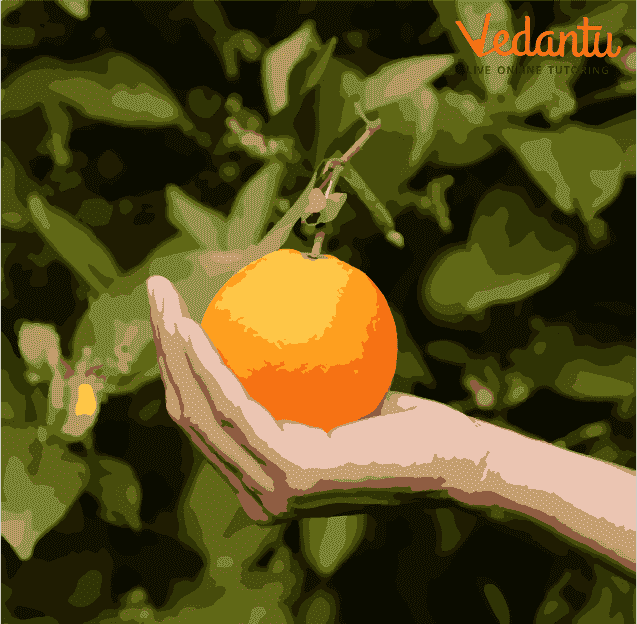




Explore Examples, Benefits & Interesting Facts About the Smallest Citrus Fruit

Different Parts of Citrus Fruit
Citrus fruits include oranges, grapefruits, lemons, limes, shaddocks, and citrons. These fruits have a juicy centre inside a skin that feels like leather. The rue family of flowering plants includes citrus plants. In this group are kumquats.
Where Do Citrus Fruits Grow?

Growth of Citrus Fruit
Citrus fruits grow in many parts of the world where it is warm. At first, they grew in southern China and other places in Asia. Citrus fruits were brought to the Middle East, Africa, and Europe by Arab traders. European explorers brought citrus fruits to the Americas by the 1500s.
Farmers often grow citrus trees in areas called groves. People can also grow citrus plants in their yards or in the wild. The smallest citrus fruit is Kumquats.
How Do Citrus Fruits Look?
The peels, or rinds of citrus fruits, are like leather. Inside the rind, the pulp is split into eight or more sections. Each portion has several small pouches and seeds. But farmers have learned how to grow many types of citrus fruit that don't have seeds.
Oranges and grapefruit are round. Grapefruits are usually bigger than oranges and are yellow. Most orange and grapefruit trees are 20 feet (or 6 meters) tall. Both kinds of trees have shiny green leaves and white flowers.
The shape of lemons and limes is more oval. They often have a bump on one end. Lime is green and smaller than a lemon, which is yellow and bigger. Lemon trees and lime trees are generally smaller than orange or grapefruit trees. The flowers on a lemon tree are purple and white, and the leaves are either reddish or green. Lime trees have white flowers and leaves that are a light green colour.
People also call shaddocks pummelos or pomelos. They are big, round, yellow fruits that look like pearls. Their insides are white or red. Shaddock trees can grow 20 to 40 feet tall (6 to 12 meters). They have shiny, green leaves and large, white flowers.
Citrons look like big lemons. They have yellowish pulp. The outside of the rind is thin, but the inside is thick. The average height of a citron tree is about 10 feet (3 meters). They feature light green foliage and purple or white blooms.
Uses of Citrus Fruits
Citrus fruits are good for you because they contain many vitamins C. Citrus fruits are often eaten raw or squeezed to make juice. Citrus fruits are also used to add flavour to drinks and food that has been cooked. In contrast, citrus fruits may be preserved or processed into jam.
The oil in the rinds of citrus fruits can be used to flavour food, make perfume, and make medicines. You can also make candy by cooking the rinds with sugar.
Conclusion
Citrus fruits are luscious as well as have a sour flavour to them. You may find several very diverse kinds of citrus fruits in the wild. Citrus fruits such as oranges, limes, lemons, grapefruits, kumquats, and others fall under this category. The flavour, health advantages, and optimal time of year to eat each fruit are all distinctive. Most of them are particularly high in vitamin C and other antioxidants, which aid in the battle against many illnesses and other health problems.
FAQs on What is the Smallest Citrus Fruit? Key Facts & Concepts
1. Why are citrus fruits good to eat?
Citrus fruits are a source of nutrients, including vitamins and minerals, that are very important. These nutrients help fight diseases, and eating these fruits can even fix severe health problems. These fruits can also help with cancer and heart disease.
2. What good things does citrus do for your body?
Citrus fruit is juicy and tastes sour. They have many different vitamins, minerals, and antioxidants that help fight diseases. Citrus fruits are low in calories and have a low glycemic index. There is no cholesterol, salt, or fat in them. They are a great source of vitamin C and have a long list of other essential nutrients for healthy growth, development, and overall nutrition. Some of these are calcium, phosphorus, magnesium, copper, potassium, folate, fibre, and vitamins B and A.
3. Can you name some citrus fruits?
Here are some names of citrus fruits:
Oranges
Lime
Sweet Oranges
Bitter Oranges
Grapefruits
Lemons





















